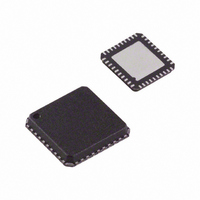AD9717BCPZ Analog Devices Inc, AD9717BCPZ Datasheet - Page 48

AD9717BCPZ
Manufacturer Part Number
AD9717BCPZ
Description
IC DAC DUAL 14BIT LO PWR 40LFCSP
Manufacturer
Analog Devices Inc
Series
TxDAC®r
Datasheet
1.AD9717BCPZ.pdf
(80 pages)
Specifications of AD9717BCPZ
Data Interface
Serial
Number Of Bits
14
Number Of Converters
2
Voltage Supply Source
Analog and Digital
Power Dissipation (max)
86mW
Operating Temperature
-40°C ~ 85°C
Mounting Type
Surface Mount
Package / Case
40-LFCSP
Resolution (bits)
14bit
Sampling Rate
125MSPS
Input Channel Type
Parallel, Serial
Supply Current
11mA
Digital Ic Case Style
CSP
No. Of Pins
40
Lead Free Status / RoHS Status
Lead free / RoHS Compliant
Settling Time
-
Lead Free Status / RoHS Status
Lead free / RoHS Compliant, Lead free / RoHS Compliant
Available stocks
Company
Part Number
Manufacturer
Quantity
Price
Company:
Part Number:
AD9717BCPZ
Manufacturer:
ADI
Quantity:
172
Part Number:
AD9717BCPZ
Manufacturer:
ADI/亚德诺
Quantity:
20 000
AD9714/AD9715/AD9716/AD9717
APPLICATIONS INFORMATION
OUTPUT CONFIGURATIONS
The following sections illustrate some typical output confi-
gurations for the AD9714/AD9715/AD9716/AD9717. Unless
otherwise noted, it is assumed that I
2 mA. For applications requiring the optimum dynamic perfor-
mance, a differential output configuration is suggested. A
differential output configuration can consist of either an
RF transformer or a differential op amp configuration. The
transformer configuration provides the optimum high fre-
quency performance and is recommended for any application
that allows ac coupling. The differential op amp configuration
is suitable for applications requiring dc coupling, signal gain,
and/or a low output impedance.
A single-ended output is suitable for applications in which low
cost and low power consumption are primary concerns.
DIFFERENTIAL COUPLING USING A TRANSFORMER
An RF transformer can be used to perform a differential-to-
single-ended signal conversion, as shown in Figure 103. The
distortion performance of a transformer typically exceeds
that available from standard op amps, particularly at higher
frequencies. Transformer coupling provides excellent rejection
of common-mode distortion (that is, even-order harmonics)
over a wide frequency range. It also provides electrical isolation
and can deliver voltage gain without adding noise. Transformers
with different impedance ratios can also be used for impedance
matching purposes. The main disadvantages of transformer
coupling are low frequency roll-off, lack-of-power gain, and
high output impedance.
The center tap on the primary side of the transformer must be
connected to a voltage that keeps the voltages on IOUTP and
IOUTN within the output common-mode voltage range of the
device. Note that the dc component of the DAC output current
is equal to I
The center tap of the transformer should provide a path for
this dc current. In most applications, AGND provides the most
convenient voltage for the transformer center tap. The complemen-
tary voltages appearing at IOUTP and IOUTN (that is, V
and V
maintained with the specified output compliance range of the
AD9714/AD9715/AD9716/AD9717.
AD9714/AD9715/
AD9716/AD9717
IOUTN
Figure 103. Differential Output Using a Transformer
) swing symmetrically around AGND and should be
xOUTFS
IOUTN
IOUTP
and flows out of both IOUTP and IOUTN.
29
28
OPTIONAL R
xOUTFS
is set to a nominal
DIFF
R
IOUTP
LOAD
Rev. A | Page 48 of 80
A differential resistor, R
where the output of the transformer is connected to the load,
R
reflected by the transformer, is chosen to provide a source
termination that results in a low voltage standing wave ratio
(VSWR). Note that approximately half the signal power is
dissipated across R
SINGLE-ENDED BUFFERED OUTPUT USING
AN OP AMP
An op amp such as the
a single-ended current-to-voltage conversion, as shown in
Figure 104. The AD9714/AD9715/AD9716/AD9717 are config-
ured with a pair of series resistors, R
distortion performance, R
resistor, R
formula
The common-mode voltage of the output is determined by the
formula
The maximum and minimum voltages out of the amplifier are,
respectively,
LOAD
AD9714/AD9715/
AD9716/AD9717
V
V
V
V
, via a passive reconstruction filter or cable. R
OUT
CM
MIN
MAX
FB
= V
= R
, determines the peak-to-peak signal swing by the
V
V
Figure 104. Single-Supply Single-Ended Buffer
REF
FB
MAX
REF
IOUTN
× I
IOUTP
REFIO
AVSS
– I
FS
DIFF
1
FS
1
28
34
29
25
.
× R
ADA4899-1
R
DIFF
R
R
FB
R
B
FB
S
FB
R
B
, can be inserted in applications
should be set to 0 Ω. The feedback
S
R
S
R
FB
C
R
B
2
can be used to perform
S
, off each output. For best
I
FS
ADA4899-1
–
+
R
+5V
–5V
C
FB
F
DIFF
, as
V
OUT














